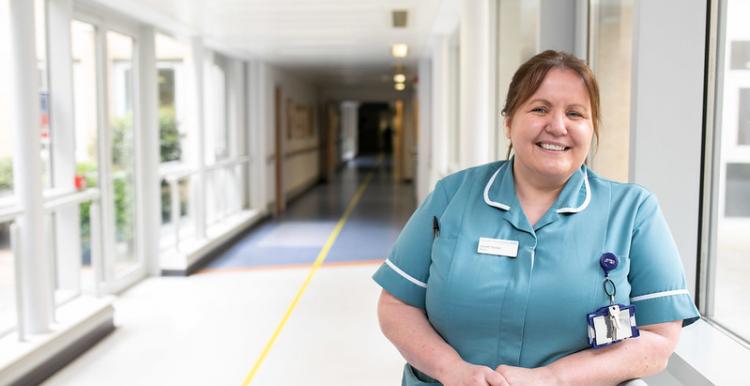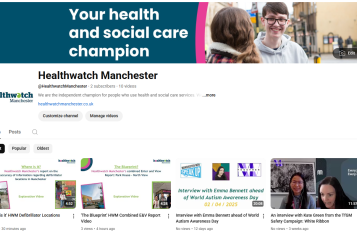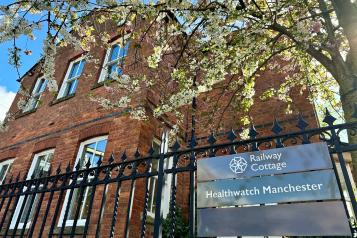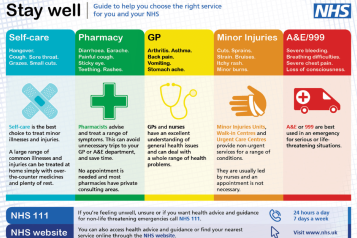What is safeguarding?

Physical Abuse
Abuse takes form in many ways, but the most common and discussed form of abuse is physical abuse. Police data from ONS show a 7% increase in reported domestic abuse offences from 2019 to 2020. With life under COVID continuing, the impact of social isolation and economic instability has created situations in which physical abuse has risen.
Signs of physical abuse:
- Burns, bruises and marks on the body
- Fractured bones and frequent injuries
- Swelling of the skin
- Lack of explanation for injuries and inconsistencies in the accounts of what happened.
Signs of physical abuse within children:
- Fractured bones and bruises
- Vomiting
- Breathing problems
- Issues with feeding and behavioural changes.
- Bed-wetting
How to support those who you think are being physically abused:
- Listen to them and do not blame them
- Don't tell them to leave their situation or relationship unless they're ready - it is their decision
- Be understanding of their situation and acknowledge the difficulty and fear that occurs within an abusive relationship
- Give them the space and time to talk
- If they decide to take the step to report their abuse, provide support in doing so
Psychological Abuse
Unlike physical abuse, psychological abuse may not be as apparent to the eye, which is why it's all the more important to recognise. With all forms of abuse, exerting power and control over others is the root of psychological abuse. Rather than using physical force, the abuser will use mental and emotional tactics to shame, ridicule and threaten the victim.
How to know if you're in a psychologically abusive relationship
- Displays of unpredictable affection
- Gaslighting is a manipulation tactic used by abusers to make their victims doubt their memory, judgment, and sanity.
- Lack of space in the relationship
- Constant belittling and public humiliation
- Stonewalling - the act of refusing to communicate and discuss issues within the relationship
- Isolation - making the victim alienate themselves from friends and family
Signs of psychological abuse:
- Low self-esteem
- Withdrawal or changes in the emotional state of the person
- Reoccurring silence or tension when a particular person is present
- The individual's partner frequently talks them down or publicly shares humiliating stories
- Reluctance to talk about the relationship with the abuser
- Behavioural change when an individual receives a text or call from the person
How to help someone in a psychologically abusive relationship:
- Listen to the victim and be understanding of their situation or reluctance.
- Do not shame or judge the individual; they're already experiencing emotional turmoil and are in a fragile state of mind.
- Believe them when they say they're being psychologically abused. Emotional abusers will often create a front that makes others believe that the victim is wrong or that the abuser is incapable of abuse.
- Understand that they may not leave the relationship immediately. Maintain your support towards the individual and create your emotional boundaries.
Sexual Abuse
In the 2013 release of sexual offending in England and Wales, data shows that approximately 85,000 women and 12,000 men between the ages of 16 to 59 had experienced forms of sexual abuse. NSPCC's 2021 report on child sexual abuse shows that 1 in 20 UK children have experienced sexual abuse. Despite the figures present, we may never know the actual statistics of sexual abuse. Sexual abuse reporting slips under the radar due to victims' difficulty speaking out and the societal shame associated with sexual abuse.
Types of sexual abuse:
- Forced masturbation
- Repeated propositions of a sexual nature
- Publication of intimate videos or pictures of an individual without consent.
- Sexual coercion
- Non-consensual penetrative sex
- Sexual activity with an individual incapable of full consent
- Indecent exposure
- Inappropriate touching
Signs of sexual abuse:
- Emotional withdrawal
- Incontinence
- Overt sexual behaviour or language in vulnerable adults
- Disturbed sleeping pattern
- Bruising to thighs and arms
- Difficulty sitting or walking
- Pregnancy in persons who are unable to consent
- Aversion or fear of bathing
- Signs of self-harm
Safeguarding against neglect
Neglect is most commonly associated with children; however, both young adults and vulnerable adults can often fall prey to this form of abuse. Defined by SCIE, neglect is the failure of a person responsible for the charge, care and custody of a child or adult to provide reasonable care.
Types of neglect
- Failure to provide or give access to food, shelter, clothing, heating, stimulation or medical care
- Failure to administer prescribed medication
- Failure by guardian or parent to ensure the child is given an education
- Preventing access to glasses, hearing aids or dentures
- Isolation of individual
- Refusal to consider the individuals ethnic, religious and cultural needs
Signs of neglect
- Malnutrition or weight loss that victim or guardian cannot explain
- Inappropriate or inadequate clothing
- Untreated injuries
- Pressure sores
- Unkempt appearance
- Poor hygiene
- Developmental problems
- Unstable environment
Self-neglect
Self-neglect can be classified into two categories: intentional and non-intentional. Intentional self-neglect occurs when the individual consciously decides not to care for themselves and neglect attending to their basic needs. On the other hand, non-intentional neglect occurs when health-related conditions like dementia increase the risk of self-neglect. With the pandemic creating unprecedented isolation levels, the complexity of self-neglect has increased as the balance between autonomy and the duty to protect lines is often hard to achieve.
Types of self-neglect
- The inability to take care of personal health, hygiene or environment
- Failure to avoid self-harm
- Failure to seek aid or access services that help meet health and social care requirements.
- Unwillingness or inability to manage personal affairs
Signs of self-neglect
- Poor and unsafe living conditions
- Hoarding
- Malnutrition
- Lack of food or clothing
- Excessive collection of animals in the home
- Inability or unwillingness to take medication or acquire treatment for injuries
- Inability or reluctance to access health and social care services
Discriminatory Abuse
The rise in hate crimes have been an even bigger topic of relevance recently, with the Euros 2021 shining a light on racially motivated abuse. With racially motivated hate crimes increasing by 12% over the past year according to gov.uk, and from the end of March 2021 there was a 9% increase of overall hate crimes from the previous year.
The three most common types of discriminatory abuse are Racist, sexist and religious. Religious abuse hit a peak when the pandemic came into place with people blaming certain religious groups over social media for the cause and spread of the virus. These types of abuse are happening every day and are leaving victims with an unwanted feeling.
Types of abuse:
- Denying basic rights to healthcare, education, employment
- Denying access to communication aids, not allowing access to an interpreter, signer or lip-reader
- Verbal abuse
Safeguarding training can help people who have a duty of care to support these members of the community. The right support and staff can promote a community of involvement.
Organisational Abuse
An abuse of power is where organisational abuse has originated from. The main places that are targeted by this are care homes, institutions and pupil referral units. The abuse stems from the people that are meant to be providing the safe environment leading to the vulnerable people not knowing where to turn as they feel they are stuck and let down by the system.
Organisational abuse is most likely to happen when:
- Staff are poorly trained
- There is no support provided by management
- Lack or poor communication skills
- There is a closed culture, meaning that the idea of new visitors/management, or any professional involvement is not encouraged.
Safeguarding training is important when tackling this type of abuse. The health staff would have an advantage by doing a course that would highlight to them when they may be restricting an activity of those in their responsibility. The course would also allow them to be able to spot if one of their colleagues or managers is conducting abusive tendencies themselves.
Domestic Abuse
There are multiple types of domestic abuse from sexual to phycological. With the number of domestic abuses at the end of March 2021 being 845,734 for the past year this being a 6% increase from last year. During Covid-19 with Refuge there had been a 60 percent increase in calls and online requests since the first lockdown began in 2020.
Physical signs of domestic abuse:
- Bruises in most cases on the arm
- Busted lip
- Red or purple marks on the neck
- Sprained wrists
Emotional signs of domestic abuse:
- Loss of interest in daily activities
- Lack of self-esteem
- Changes in sleep habits
- Anxiety
These symptoms are not always present however these are the some of the main ones to keep an eye out for. There are also multiple behavioural changes that can be caused by domestic abuse these differ depending on each person, for example a person who was once the most outgoing people you know has now become reserved and distant.
Helping a victim of domestic abuse is a sensitive matter therefore the safeguarding training can help social workers spot signs of verbal and physical abuse and allow them the knowledge to know how and when to intervene hopefully before it reaches a crisis level.
Modern Slavery
There is no typical victim of modern slavery, it could happen to anyone, however it is more relevant amongst the most venerable, or within a socially excluded group or minority. Modern slavery comes in multiple forms this could be human trafficking, domestic servitude or forced labour these of which happen daily.
Key issues that could contribute to a modern slavery
- Poverty
- Lack of education
- Unstable political conditions
It is estimated that there are around 40 million people worldwide in modern slavery, it is estimated that around 136,000 of the modern slavery cases are happening in the UK. With the number of potential modern slavery victims in the UK rising by 52% in 2020 this is a big issue in the UK.
Common areas where labour exploitation takes place
- Food processing
- Factories
- Construction
- Tarmacking
- Agriculture
- Car wash
Signs of modern slavery
- Children not attending school
- Parents working without pay
- Injuries
- Tattoos or other marks indicating ‘ownership’
- Distrust of authority
- Intimidation of people at risk
Modern slavery within children is child abuse meaning that normal child protection procedures apply. Safeguarding training allows us to be able to highlight this area of abuse where many people have little concept of.


